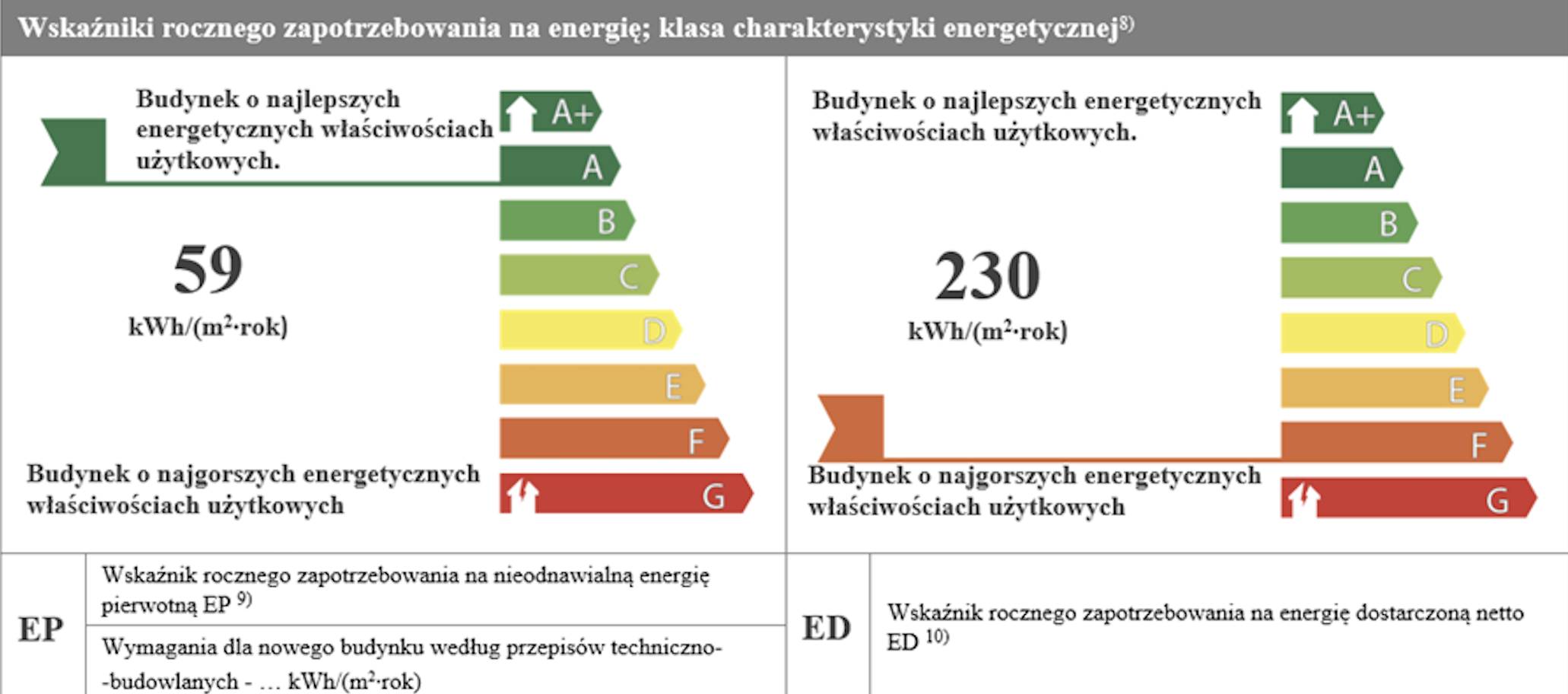The cheapest and worst stoves will come back into favor. New regulations are to blame

- Non-governmental organizations are protesting against new regulations regarding energy classes of buildings.
- They demand immediate correction from the Ministry of Development and Technology.
- They point out that the new regulations will cause huge disinformation, misleading residents and property buyers.
- The changes may be detrimental to the fight for clean air and are inconsistent with EU regulations - emphasizes the Polish Smog Alarm.
On Tuesday, July 1, public consultations on the draft regulation of the Ministry of Development and Technology on the methodology for determining the energy performance of buildings ended.
- The project assumes the introduction of energy classes for buildings , following the model of classes commonly used in labeling household appliances - the Polish Smog Alarm reminds in a press release.
The more energy efficient a house is, the better the class it should have.At the same time, he points out that the problem is that instead of clear and understandable information for everyone, we can get completely contradictory assessments. How is that possible?
- The assumption of the new regulations is as follows: the more energy-efficient a house is, the better class it should have. Non-governmental organizations indicate that this is a very good direction: homeowners, renters or buyers would find out what class a given building has , how much energy is needed, among other things, to heat it, and thus what bills have to be paid for its maintenance. However, this will not happen - the organizations emphasize.
The Ministry of Climate has included two separate classifications in one documentThe signatories of the position indicate that after the classification proposed by the Ministry of Development and Technology comes into force, bizarre situations will occur. The same building will be able to have the best class A and one of the worst, class F, at the same time.
This is because ministerial officials decided to include two separate classifications in one document – the building's energy performance certificate : one based on the so-called non-renewable primary energy demand indicator (EP) and the other based on net delivered energy (ED).
- While the latter reflects the actual energy needs of the building, the former is based on an arbitrarily determined conversion factor and is intended to reflect only the consumption of non-renewable energy, misleading the recipients of the information - experts point out.
Example? A several-decade-old house, poorly insulated , with leaky windows, heated with an old boiler, a wood-burning stove, can achieve an EP index comparable to a modern building with very good insulation, heated with an efficient heat pump.
- explains legal counsel Miłosz Jakubowski from the Frank Bold Foundation.
- It's as if we listed the property as both a five and a two at the same time - adds the expert.

But where do such significant differences come from? The problem arises when the energy source is biomass (e.g. in the case of houses heated with wood or pellet boilers). Biomass is treated as a renewable fuel, so when calculating the EP indicator, only a small input of non-renewable energy related to its acquisition and transport is taken into account.
In practice, this means that the EP index for biomass heating:
- is very low,
- does not in any way reflect the actual energy consumption of the building.
Non-governmental organizations suggest using one, not two, indicators. An energy certificate should show the actual energy status of a house . So that it is clear how much energy a given house uses, and therefore what the actual costs of maintaining it will be.
According to the organization, once the regulations come into force, it can be expected that there will be widespread cases in which homeowners will install the cheapest and most polluting wood stoves just to achieve a much higher energy class.
The regulation is intended to implement the provisions of the Building Directive, but in fact it is inconsistent with it.- As a result, instead of improving energy efficiency and promoting lower heating costs, these regulations will contribute to the deterioration of air quality in Poland - says Andrzej Guła, president of the Polish Smog Alarm.
The regulation is supposed to implement the essential provisions of the building directive, but in reality it is inconsistent with it. Energy class A according to the directive is reserved for zero-emission buildings with very low energy demand, and according to the ministry's proposal it will be given to an old, under-insulated house with a smokestack
- explains Miłosz Jakubowski.
The protest against the implementation of the discussed regulations was signed by: the Frank Bold Foundation, the Polish Smog Alarm, the Instrat Foundation, the Tempo Project, the Reform Institute and the Institute of Environmental Economics.
portalsamorzadowy





